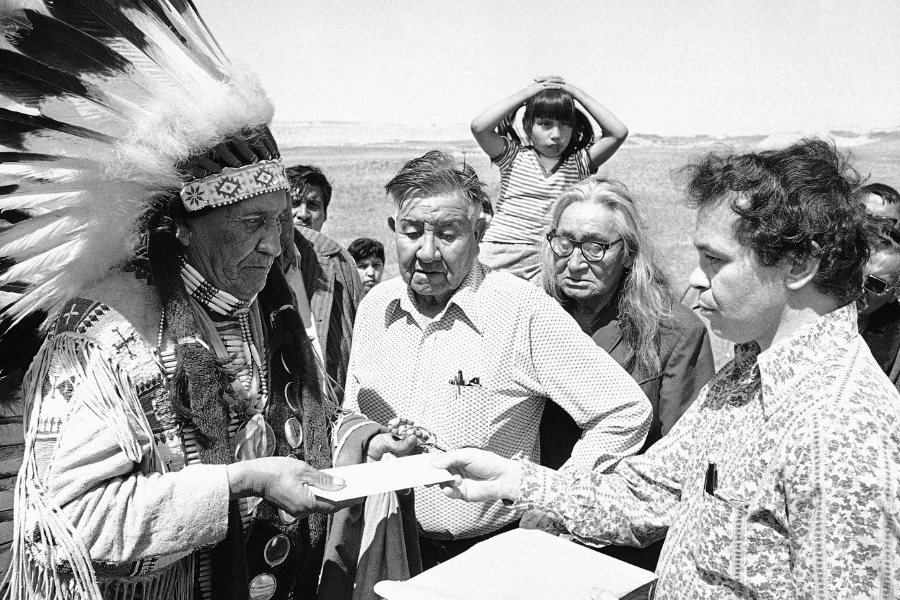Hank Adams stands as a significant yet often overlooked figure in the history of Indigenous activism in the United States. A member of the Assiniboine-Sioux tribe, Adams dedicated his life to advocating for the rights, sovereignty, and social justice of Indigenous peoples. His tireless efforts helped lay the groundwork for numerous legal and societal advancements, making him a key contributor to the broader struggle for Native American self-determination. Despite his profound impact, Adams remains relatively unknown in mainstream history, highlighting the need to shed light on his remarkable journey and achievements.
Early Life and Background
Hank Adams was born in 1940, on the Fort Peck Indian Reservation in Montana. His upbringing on the reservation exposed him to the harsh realities of poverty, discrimination, and the systemic challenges faced by Native Americans. Growing up surrounded by the issues affecting his people, Adams was deeply influenced by the cultural heritage and struggles of the Assiniboine-Sioux tribe. His connection to his roots and his lived experience in a marginalized community shaped his resolve to become an advocate for Indigenous rights.
Adams’ early life was marked by resilience and a deep sense of responsibility to his people. His personal experiences with poverty, limited access to education, and the erosion of cultural identity motivated him to seek change. These formative years laid the foundation for his future activism and commitment to improving the conditions of Native Americans across the United States.
Advocacy and Contributions
Hank Adams became a leading voice in the fight for Native American sovereignty, treaty rights, and self-determination. One of his key focuses was advocating for the protection and fulfillment of treaties between the U.S. government and various Indigenous tribes. Many of these treaties had been dishonored or ignored, leaving Indigenous communities without access to land, resources, and basic rights.
In the 1960s and 1970s, Adams played a pivotal role in the American Indian Movement (AIM), an organization dedicated to promoting the rights of Native Americans. AIM emerged as a powerful voice in addressing issues such as poverty, discrimination, and the loss of cultural identity among Indigenous peoples. Adams’ work with AIM led to increased awareness of the struggles faced by Native Americans and brought national attention to the plight of Indigenous communities.
Adams was instrumental in organizing protests, demonstrations, and legal battles aimed at reclaiming land, promoting education, and securing greater self-governance for Native nations. His efforts extended to various forms of advocacy, including lobbying for policies that would provide funding for housing, healthcare, and education on reservations. His determination and leadership made him a central figure in the push for Native American rights during a period of heightened activism.
Legal Battles and Advocacy for Sovereignty
One of Hank Adams’ most significant achievements was his involvement in landmark legal battles aimed at restoring Indigenous sovereignty and treaty rights. In the 1970s, he played a key role in efforts to bring attention to the broken promises made by the U.S. government regarding land rights and treaties.
One of Adams’ notable contributions was his advocacy for the restoration of the Fort Peck Tribes’ fishing rights along the Missouri River. His work in this case became a powerful symbol of the struggle for Native American self-determination and the fight to reclaim access to resources that had been taken from Indigenous peoples. The victory in the Fort Peck case was a clear demonstration of Adams’ ability to mobilize communities and bring about meaningful change.
Adams’ efforts weren’t limited to legal battles. He was also actively involved in advocating for the passage of policies that supported Indigenous communities’ ability to govern themselves. His work extended to environmental issues, focusing on the protection of sacred lands and the preservation of cultural traditions. Adams believed that true sovereignty went beyond political and legal recognition—it encompassed the ability to make decisions about one’s land, resources, and cultural heritage.
Legacy and Recognition
Despite his significant contributions, Hank Adams remains relatively unknown in mainstream narratives about the fight for Indigenous rights. This lack of recognition is reflective of the broader issue of underrepresentation of Native American leaders in American history. Adams’ legacy is one of quiet yet powerful advocacy, and his work continues to inspire future generations of activists.
In recent years, there has been a growing recognition of the importance of Indigenous leaders like Adams. Academic institutions, museums, and cultural organizations have begun to acknowledge his contributions, shedding light on his pivotal role in the struggle for Native American rights. Adams’ life serves as a reminder of the importance of honoring those who have dedicated their lives to advocating for marginalized communities.
Conclusion
Hank Adams’ life and work offer a crucial perspective on the fight for Indigenous rights in the United States. His unwavering commitment to Native American sovereignty, treaty rights, and social justice has left an indelible mark on the history of Indigenous activism. Although he remains underrecognized in mainstream narratives, Adams’ contributions continue to inspire movements dedicated to advancing the rights of Native Americans.
As society continues to reckon with its past and seek justice for marginalized communities, Hank Adams’ legacy serves as a vital reminder of the power of advocacy and the importance of honoring those who fight for the rights of others.
Discover the Key Insights and News That Matter at essentialtribune.
